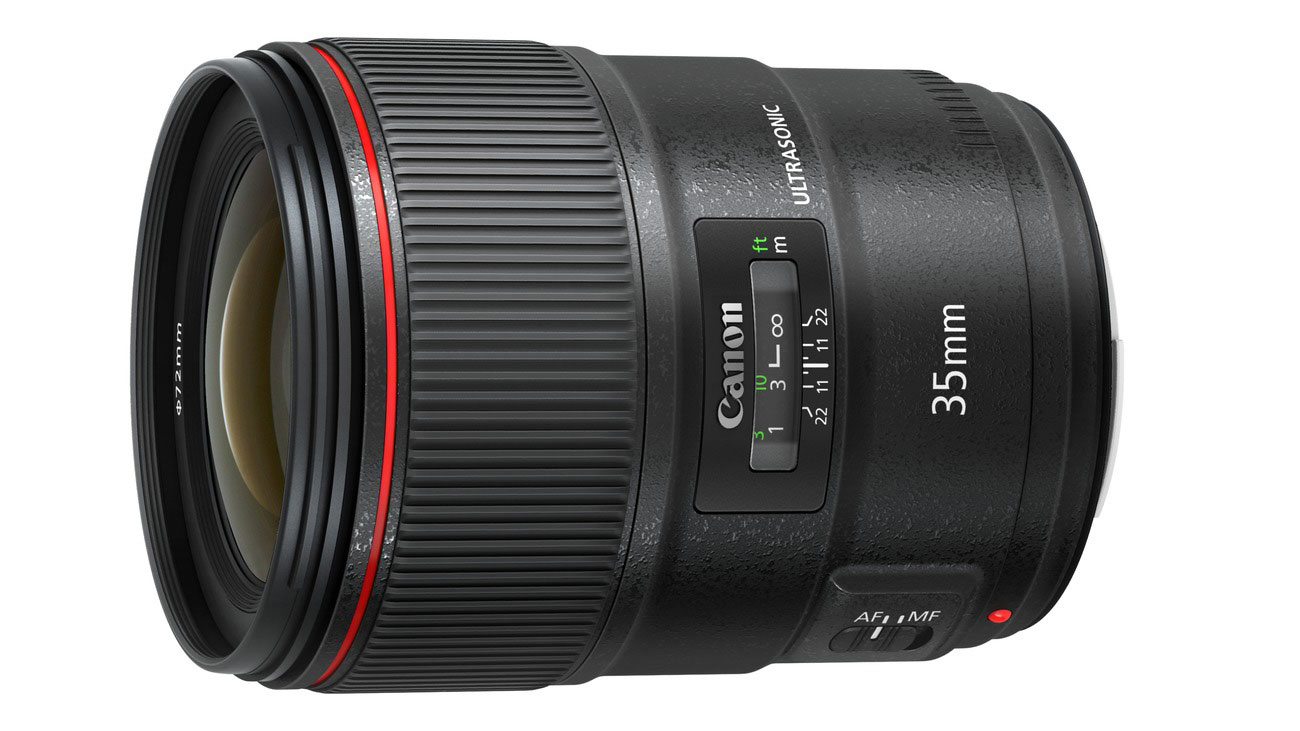20 things you never knew about Canon lenses
We were lucky enough to go on a tour of Canon’s amazing Utsunomiya lens factory in Japan – and this is what we learned
14. Lens construction: EF 24-70mm f/2.8L II USM cutaway

If you want to know why some lenses weigh (and cost) so much, take a look at this. It's an EF 24-70mm f/2.8L II USM lens sawn in half through the middle, exposing the complex arrangement of lens elements, lens groups and cams in the lens barrel.
15. Canon invented the image stabiliser
To this day, this is the achievement that Canon clearly feels a particular pride in.
Canon uses lens-based image stabilisation rather than the sensor-shift technology used by mirrorless camera makers because of the EOS DSLR design – to stabilise the viewfinder image, you have to stabilise the lens. If the sensor was stabilised instead, the optical image in the viewfinder would still be wobbly.
Mr Kaneda, head of Canon’s lens product business, did hint to us, however, that we could soon expect to see the lens and the camera working together to synchronise image stabilisation. Interesting!
16. The widest zoom lens in the world

This image was captured using the Canon EF 11-24mm f/4L USM. It which offers an angle of view of 117 degrees at its widest setting and has a huge convex front element, and no fewer than four aspherical elements, three of which are in the front and one at the back.
We thought that this would have been Canon's most difficult lens yet, to make, but apparently not: "A slight challenge at the beginning," says Canon Takumi Mr Saito, "but not so much of a difficulty I would say."
17. BR (Blue Spectrum Refractive) optics

Canon uses a variety of new optical materials in some of its specialised lenses, including clever BR (Blue Spectrum Refractive) optics. These are not made from regular glass, but an organic material, or resin, developed by Canon.
The best camera deals, reviews, product advice, and unmissable photography news, direct to your inbox!
BR lens elements offer strong blue light refraction, and, as part of the lens design, they can reduce chromatic aberration to a degree not possible with regular glass elements.
Read more: The complete guide to Canon's lens terms
It's been used in Canon's EF 35mm f/1.4L II USM lens to great effect, which shows little or no chromatic aberration, especially in defocused backgrounds, where colour fringing can be particularly disturbing.
18. DO optics
You may also have heard of Canon's DO (Multi-Layer Diffractive Optical Element) lenses. These use diffraction grating principles from a particularly technical area of optical science to help counteract chromatic aberration.
Canon's DO optics reverse the usual dispersion of glass elements, so they can be used in combination to correct colour fringing. Canon's breakthrough was to work out how to combine dual opposing diffractive layers to prevent the light scatter and flare normally associated with diffraction gratings.
19. George the robot

Canon has twenty or thirty of these automated delivery robots at its Utsunomiya factory. They follow the yellow tracks painted on the floor and have automatic collision detection sensors to stop them colliding with things and people.
This one stopped so that we could take a closer look, possibly out of politeness towards its human visitors but more likely because someone pressed a button somewhere.
It's not really called George – but we felt we had to call it something.
20. Canon's 130 million EF lenses... and counting
In October 2017 Canon hit a production milestone of 130 million EF lenses. We haven't carried out a precise calculation because they come in all shapes and sizes, but we reckon if you laid them end to end they would probably stretch, very literally, halfway around the world.
Canon announced it had achieved in September the production of 90 million EOS series cameras, which suggests an average of just 1.44 lenses per camera –so it looks like too many users just stick to the kit lens that comes with the camera!
Read more: 8 best portrait lenses for Canon users

Rod is an independent photography journalist and editor, and a long-standing Digital Camera World contributor, having previously worked as DCW's Group Reviews editor. Before that he has been technique editor on N-Photo, Head of Testing for the photography division and Camera Channel editor on TechRadar, as well as contributing to many other publications. He has been writing about photography technique, photo editing and digital cameras since they first appeared, and before that began his career writing about film photography. He has used and reviewed practically every interchangeable lens camera launched in the past 20 years, from entry-level DSLRs to medium format cameras, together with lenses, tripods, gimbals, light meters, camera bags and more. Rod has his own camera gear blog at fotovolo.com but also writes about photo-editing applications and techniques at lifeafterphotoshop.com
